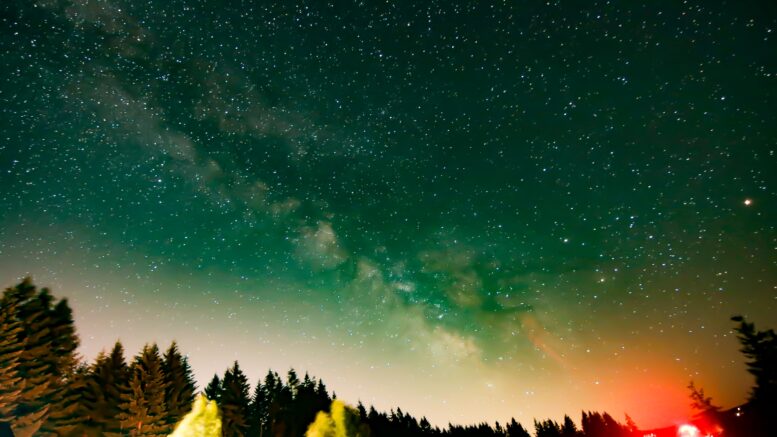Skyglow is a very important quality of the night sky quality that astronomers of all levels worry about. The technical definition of the term skyglow, or sky glow, is the diffuse luminance of the night sky, apart from discrete light sources such as the Moon and visible individual stars. In simpler terms, skyglow typically refers to the lighting or luminance that arises from artificial lighting, but there are natural reasons for skyglow such as starlight, zodiacal light, and airglow.
The amount of visible light at sights vary depending on where the site sits in relationship to surrounding cities and the weather conditions that night. One cannot control where the site sits in regards to the surrounding cities; however, how much it is visible each night is dependent on conditions that night. These factors include the immediate weather conditions, quantity of dust and gas in the atmosphere, amount of light directed skyward, and the direction from which it is viewed. In poor weather conditions, more particles are present in the atmosphere to scatter the upward-bound light, so sky glow becomes a very visible effect of wasted light and wasted energy.
In the context of light pollution, skyglow arises from the use of artificial light sources, including electrical lighting used for illumination for houses, billboards, and more. Light propagating into the atmosphere is the result from the lights being directed upwards or incompletely shielded sources, or after reflection from the ground or other surfaces.
Why is this important? It is because sky glow reduces the ability to view celestial objects by reducing the contrast of stars or other celestial objects against the dark sky background. This can be really noticed as a typical suburban sky is 5 to 10 times brighter at the zenith than the natural sky. Skyglow from artificial lights is most often noticed as a glowing dome of light over cities and towns.
To reduce skyglow, it is recommended to shield all lights, change all light fixtures to point down, and make sure that the lights that you do control to be compliant with the best practices for preventing light pollution. Other options are to get involved with local groups that are working to reduce skyglow and try to get new laws passed to limit light pollution in your area.
To learn more about the Bortle scale of measuring light pollution, check out this article on the subject. Make sure to follow us at twitter.com/comospnw and check back in for more articles like this. A great source of information can be found here. For some objects that look great in light polluted skies, check out this article.

Be the first to comment on "Sky Glow: What Is It? Why is its important?"